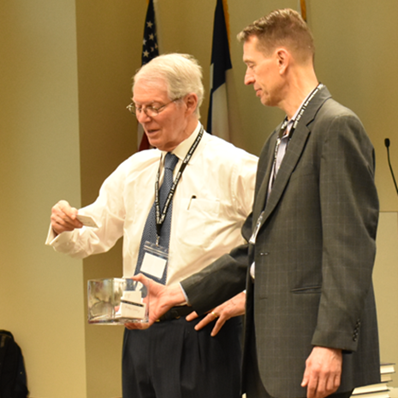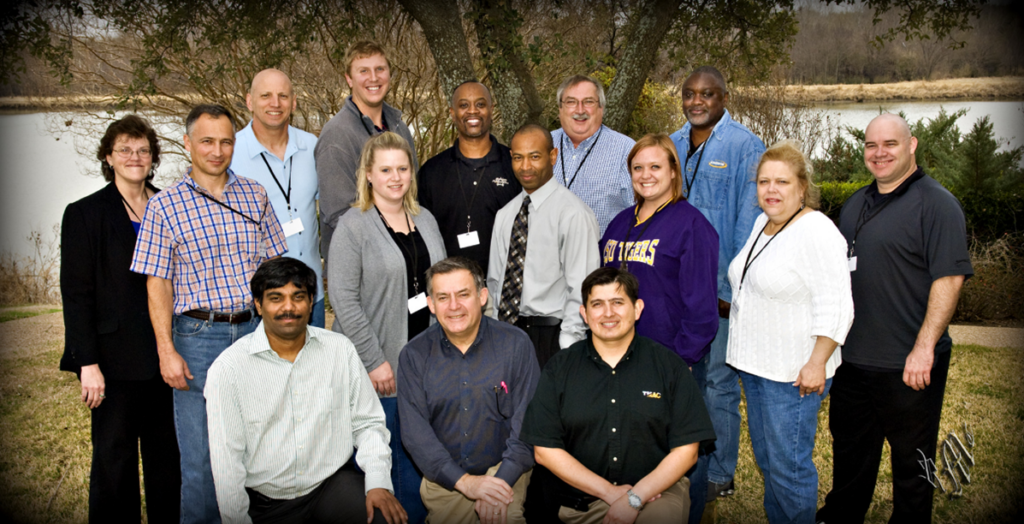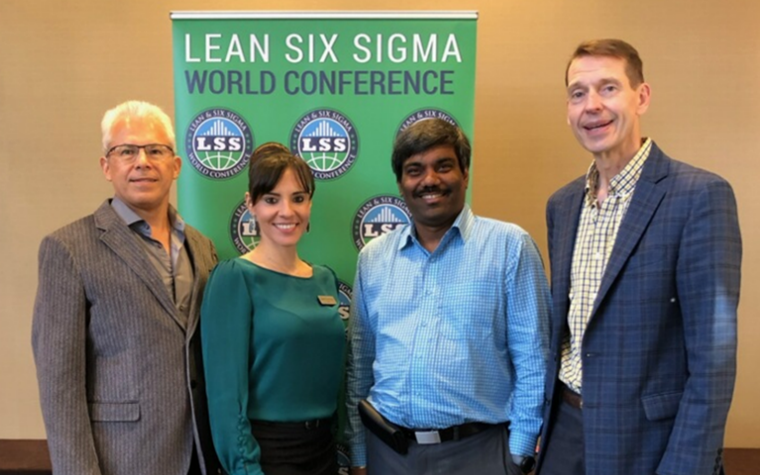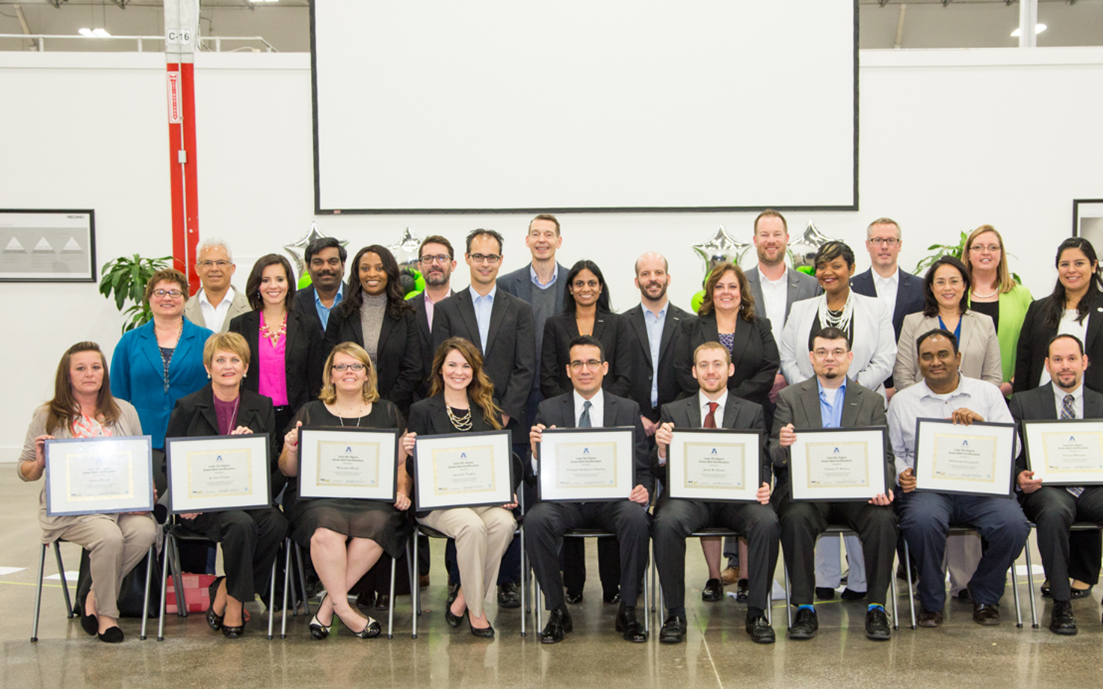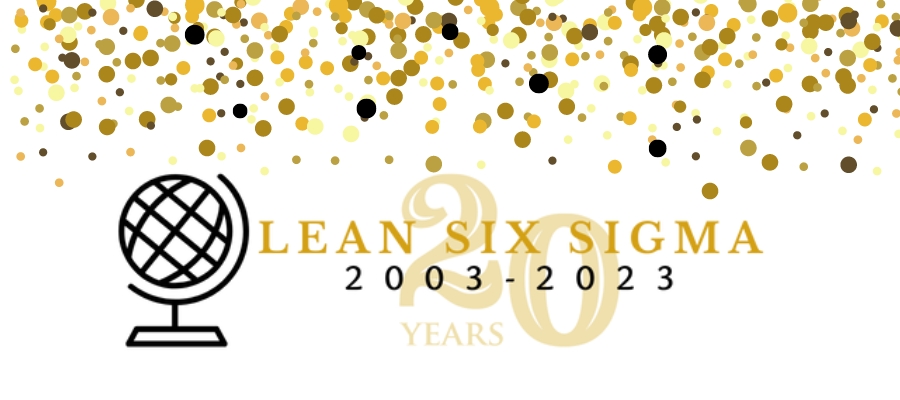20 Years of LSS
This year marks 20 years since TMAC offered our very first LSS class. Hard to believe it’s been two decades since we launched our Lean Six Sigma Program. Earlier this month we celebrated this milestone with customers, current and former TMAC staff members.
How did our program get started? Its origins go back to 2002 when numerous companies contacted us about LSS. TMAC’s Director at the time, Drew Casani, asked me to lead our effort in responding to this need. We reached out to George Group, the Dallas-based consulting company that pioneered the integration of Lean and Six Sigma. Soon we had a handshake deal and began to use George Group materials and methods.
Drew also had the insight to partner me with Dr. Mary Johnson as my first co-instructor. At the time Mary was on the staff of what is now called UTARI – The University of Texas at Arlington Research Institute. A gifted teacher who has a knack for making complex concepts straightforward, Mary was an immediate hit with our LSS students back in 2003.
Our very first class was an onsite LSS Green Belt for Johnson & Johnson in Sherman, TX. This class was in late Spring 2003, and we had about a dozen students. Our second class was an Open Enrollment LSS Black Belt which kicked off in May 2003. It wrapped up in August 2003 – exactly 20 years ago this month. That class had five students from five different companies. A small class, but it was a start.
With those two classes we were off and running. To help create interest we held a series of Executive Roundtable events from 2003 to 2005. Mike George, Sr. served as our keynote speaker at some of these events along with senior managers at companies who were successfully using Lean Six Sigma to reduce waste, increase quality, and improve profits.
By the Fall of 2004 we had our first class with 20 students. Those Black Belt students came to UTARI from six different states: Minnesota, Wisconsin, Tennessee, Arkansas, Illinois, and Texas. Since that time, we’ve had students travel to Texas for LSS training from 40 different states and 23 different foreign countries.
Over the years I worked with a series of different TMAC staff as Lean Six Sigma instructors including Mark Sessumes, Frank Groenteman, B. J. Fontaine, Pat Boutier, Barbara Ward, and Randy Bohannon. I learned a lot from each of them but felt especially lucky to have worked with Randy. From about 2005 until he fully retired in 2010 Randy served as my main co-instructor. Always prepared, he had a great sense of humor, and really connected with our students.
Two of our current instructors, Alberto Yanez and Satya Kudapa, taught their first LSS classes for TMAC in 2008. Both are excellent instructors and have taught dozens of GB and BB classes since that time. While they do a great job as instructors, they may be better coaches. We estimate TMAC staff have delivered over 5,000 hours of project coaching for GBs, BBs, and MBBs. Alberto and Satya have served as coaches for our students for the majority of those hours.
A second group of TMAC staff began teaching Lean Six Sigma classes starting with Esteban Pedraza in 2011. He was followed by Diana Martinez (2014) and Chris Meeks (2015). All three of them developed into outstanding instructors. They primarily taught GB classes and played key roles in deployment of the LSS Programs at Oncor, City of El Paso, and Knauf. And our newest LSS Team member, Mike Boyte, who bears the distinction of being a former student. Mike completed his BB training at TMAC back in 2005 and joined TMAC in 2019.
Starting in 2008 we began offering LSS Master Black Belt training. While I had served as an MBB instructor for George Group as a contractor since 2006 this was our first chance to offer this training to TMAC customers. We’ve been partnering with Kimberly Watson-Hemphill with Firefly Consulting to deliver MBB training since 2008. In addition to technical knowledge, Kimberly – along with her colleague Chuck Cox – bring a great deal of business experience across a wide range of industries. As with my TMAC colleagues, I’ve learned a ton from working with them.
Over the years TMAC staff have taught a total of 2,732 students in 222 Lean Six Sigma classes, including 59 BB, 81 GB, and 24 MBB classes. In addition to our Open Enrollment classes at UTA, we’ve delivered LSS training at customer locations all over the Dallas-Fort Worth area, around Texas, in several US states, and internationally in Canada, Ireland, and England.
Through the years our staff have been active in presenting on a variety of Lean Six Sigma topics at local professional societies in the DFW area, and at the LSS World Conference. TMAC staff have often partnered with customers to tell the story of their LSS Program at this conference.
And we had some fun along the way. Most classes enjoyed going out to dinner. Some classes sought out other opportunities such as attending games of local sports teams including the Texas Rangers and Dallas Mavericks. One class attended the Fort Worth Stock Show & Rodeo – a true Texas experience! These activities helped establish bonds which continue to this day.
Most gratifying for TMAC staff was to see the growth of students who met the requirements to become certified as a LSS Green Belt, Black Belt, or Master Black Belt. We were fortunate to be invited by some customers to celebration events to honor these individuals.
TMAC held a special event on August 3rd to recognize TMAC customers and the 20th Anniversary of our LSS Program. At this event we had a special recognition for four customers who have been longtime supporters of our program: USG Corporation, Uber Freight (formerly Transplace), Oncor, and Keurig Dr Pepper. Each of these companies have made a major investment in their staff over many years. And they have reaped the benefits with millions of dollars in impact. Not only that, many of the individuals trained in LSS have moved into leadership positions at their respective companies.
It’s been a lot of hard work, but very fulfilling. We look forward to continuing to partner with our customers in helping them become more competitive and to increase their profitability.

